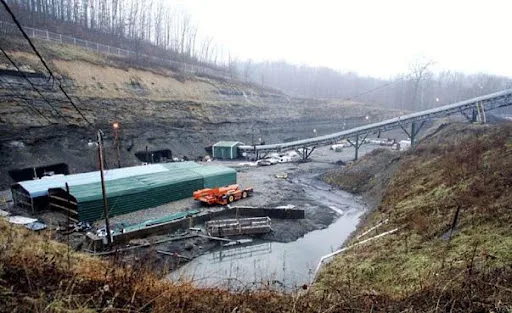Methane in Coal Mines: Unveiling Characteristics, Sources, and Hazards
Methane in Coal Mines: Unveiling Characteristics, Sources, and Hazards
Characteristics:-
Methane (CH4), commonly known as natural gas, is colorless, odorless, and highly flammable. It is lighter than air and tends to rise, creating the potential for accumulation in higher areas of mines.
Sources:-
- Coal Seam Decomposition:-
Methane is produced during the natural decomposition of organic matter within coal seams.
- Microbial Activity:-
Microorganisms in coal contribute to methane generation.
- Fossil Fuel Deposits:-
Residual methane can be found in geological formations along with coal deposits.
Frequently Asked Questions (FAQ) - Methane in Coal Mines
What are the characteristics of methane, and why is it a concern in coal mines?
Methane is a colorless, odorless, and highly flammable gas. In coal mines, it is a concern due to its explosive nature and potential health hazards when present in high concentrations.
What are the primary sources of methane in coal mines?
Methane is generated in coal mines through natural processes such as coal seam decomposition, microbial activity within coal seams, and residual deposits in geological formations.
Why is methane particularly dangerous in coal mining environments?
Methane poses a significant danger in coal mines due to its flammable nature. When methane concentrations reach explosive levels and come into contact with an ignition source, it can lead to potentially catastrophic mine explosions.
How is methane managed in coal mines to mitigate risks?
Various technologies and strategies are employed, including efficient ventilation systems to disperse methane, drainage systems to extract gas before mining, continuous monitoring with advanced gas detection systems, and the extraction of coal bed methane for commercial use.
What role do ventilation systems play in managing methane concentrations?
Ventilation systems are crucial for dispersing methane concentrations in mines. Properly designed systems ensure the continuous flow of air, reducing the risk of methane accumulation and lowering the chances of explosions.
How is methane drainage used as a strategy to control concentrations in coal mines?
Methane drainage involves extracting methane before mining operations. This reduces methane emissions, minimizing the risk of underground explosions and creating safer working conditions.
Can you explain the significance of gas detection systems in coal mines?
Gas detection systems continuously monitor methane levels in real-time. These systems use advanced sensors and automation to trigger alarms and responses when methane concentrations reach critical levels, providing an early warning to miners.
Are there examples of incidents related to methane in coal mining, and what lessons have been learned from them?
Yes, incidents like the Sago Mine Disaster (2006), Pike River Mine Disaster (2010), and Lily Mine Tragedy (2016) highlight the dangers of methane in coal mining. Lessons learned include the importance of rigorous safety measures, improved communication, comprehensive risk assessments, and effective emergency preparedness.
How does the coal bed methane extraction process contribute to managing methane concentrations?
Coal bed methane extraction involves extracting methane for commercial use, reducing its presence in the mine. This not only minimizes the risk of explosions but also provides economic benefits through the utilization of extracted methane.
What measures can miners take to ensure their safety in environments with methane concentrations?
Miners should undergo proper training on recognizing methane hazards, understanding gas detection system readings, and executing emergency response protocols. Additionally, using personal protective equipment (PPE) and adhering to safety procedures contribute to minimizing risks associated with methane exposure.








Post a Comment